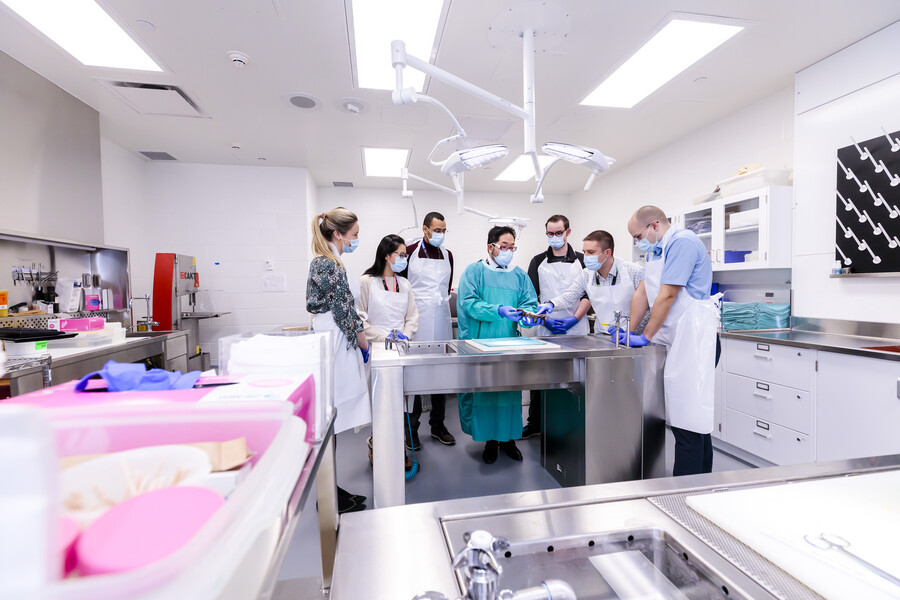Case of the Month: October 2023
Clinical history
A 57 year-old male presented to ER with acute onset of expressive aphasia and facial droop. A CT Head/Angiogram was done and found no evidence of stroke. An MRI was then ordered which showed multiple signal abnormalities in the left temporal lobe and thalamus, the right hippocampus, and corpus callosum, as well as meningeal enhancement overlying the left temporal lobe. Neurosurgery was consulted, the patient was brought to the OR for craniotomy, and an intraoperative biopsy of the left temporal lesion was obtained. The neurosurgeon has now paused the operation and is awaiting the diagnosis before continuing.
Questions:
- What are the common reasons for an intraoperative consultation during neurosurgery?
- What is the diagnosis?
- What are the diagnostic histological features of this lesion?
How to participate
Take a look at the H&E images.
Anyone is welcome to try to solve the puzzle by commenting on the related post on our Instagram.
If you are a medical student at the University of Toronto, you can also:
If you do, you are in for a chance to win a $100 gift card! (UofT Med students only).





Discover the answer to October's case of the month!
The answer to the October Case of the Month is glioblastoma. Glioblastoma is a high-grade, infiltrative glial neoplasm with key diagnostic features on histology: hypercellularity, nuclear atypia, mitoses, geographic necrosis, and microvascular proliferation. These features differentiate glioblastoma from lower-grade gliomas, though immunohistochemistry and molecular testing are required for final classification and prognostication. Glioblastoma is the most common malignant brain tumour in adults. The peak incidence in patients is age 55-85 years. Prognosis is very poor, with a survival of only 1-2 years after diagnosis. Treatment includes surgical resection, radiation, and chemotherapy. Glioblastomas are highly infiltrative and spread throughout the brain, which makes complete resection impossible.
Brain lesions are often assessed intraoperatively in order to guide surgical management. Pre-operative medical imaging helps narrow the differential diagnosis. For ring-enhancing lesions, the differential diagnosis includes (but is not limited to) glioblastoma, metastatic malignancy, lymphoma, and abscess, all of which need to be treated differently. Intraoperative consultations performed by the pathologist are done by making a smear for cytological evaluation and freezing, cutting, and staining a piece of tissue for histological assessment. The pathologist then looks at the slides in real-time and provides an answer to the neurosurgeon who is waiting in the operative room for the result.
If you are a current medical student at U of T, you can register to join the October case of the month lecture online or in person and have a chance to win a $100 gift card!
You can also join the Special Interest Group in Laboratory Medicine to learn more about Laboratory Medicine.
Laboratory Medicine and the study of disease for medical students

